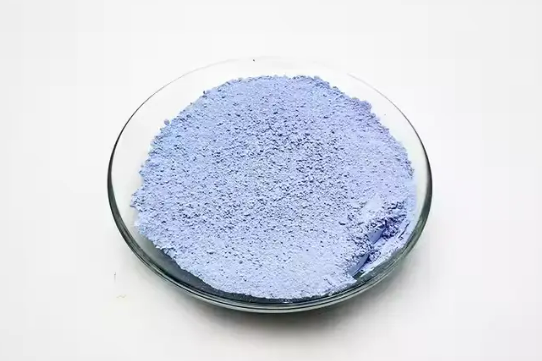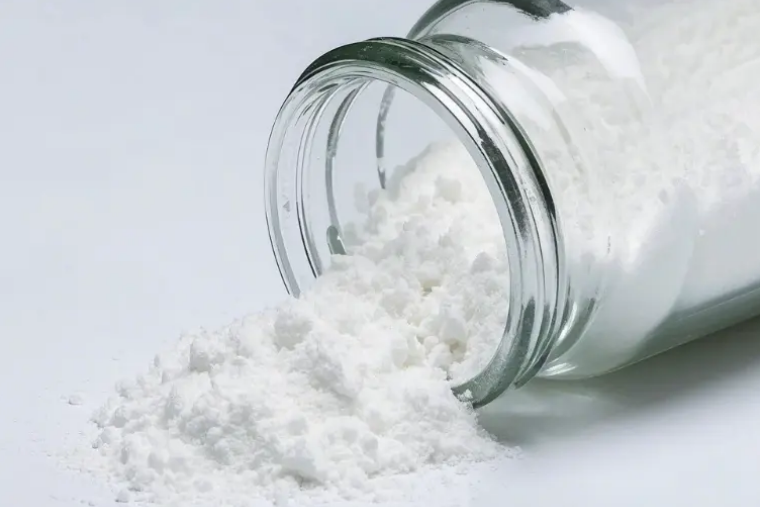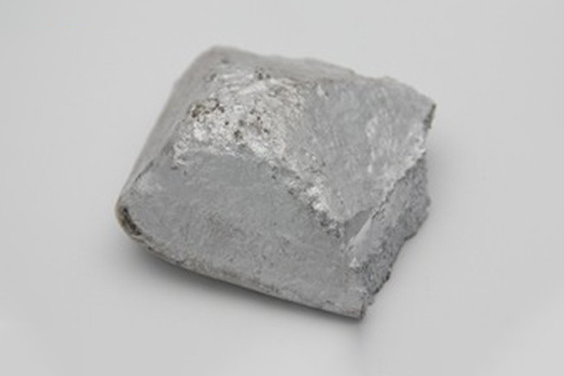Neodymium is a rare earth element that’s often associated with high-strength magnets. But dig a little deeper, and you’ll find a broader story—one that includes oxides, fluorides, chlorides, and nitrates playing active roles across glassmaking, catalysis, electronics, and even agriculture.
This article gives you a complete overview of neodymium compounds: what they are, what they do, and where they work best. For technical specifications and available formats, check out our neodymium product catalog.
Neodymium Oxide is the most recognized neodymium compound. Chemically stable and thermally robust, Nd₂O₃ is primarily used as a colorant in specialty glasses and ceramic glazes. Its light absorption properties vary subtly with lighting conditions, producing dynamic purple-red hues.
Beyond color, neodymium oxide improves thermal resistance in optical glasses and serves as a key ingredient in polishing powders used in silicon wafer production. In laser host materials, it acts as a dopant, enabling efficient light amplification.

NdF₃ is a white crystalline solid used extensively in the metallurgy of neodymium metal. It lowers the melting point in electrolytic cells and enhances the current efficiency of rare-earth metal extraction. Fluorides are also used to produce neodymium alloys, particularly those needed for permanent magnets.
Thanks to its high thermal stability and low moisture sensitivity, NdF₃ is ideal for vacuum deposition and metal-organic precursor formulations.
Neodymium chloride (NdCl₃) and neodymium nitrate (Nd(NO₃)₃) are soluble compounds often used in catalyst systems or as precursors for advanced ceramics. Their ease of handling and reactivity make them valuable in lab-scale synthesis and industrial chemical processing.
Neodymium-based glass has been around since the early 20th century. It’s not just decorative—it's functional. For example, astronomers use neodymium-doped filters to reduce unwanted light during spectroscopic analysis. These glasses also appear in welding visors and laser safety goggles, where spectral filtering is critical.
In ceramics, neodymium compounds help create brilliant glazes that are both thermally stable and optically unique. When mixed with other lanthanides like praseodymium, neodymium forms didymium, a compound that selectively blocks yellow sodium light.
Neodymium-rich rare-earth mixtures are used in fluid catalytic cracking (FCC) units in refineries. Here, the presence of Nd enhances the cracking activity and thermal stability of zeolite-based catalysts. It improves gasoline yield and minimizes coke formation.
In some oxidative catalytic systems, neodymium salts are being explored as active species to reduce NOx emissions and improve combustion efficiency.
As trace micronutrients, rare earth elements like neodymium are being studied for their ability to boost crop yield and root strength. Neodymium nitrate and related compounds are sometimes added to fertilizers to improve plant resistance against drought or disease, though this area is still under active research.
Neodymium’s potential in water purification and environmental remediation is also emerging, especially as part of composite materials for capturing heavy metals.
The electronics sector has long used neodymium compounds for phosphors and dopants. One of the most iconic applications is Nd:YAG—neodymium-doped yttrium aluminum garnet—used in industrial, medical, and military laser systems.
Neodymium-doped materials also play a role in fiber amplifiers, optical isolators, and frequency converters. In the energy sector, these compounds are investigated for use in thermoelectric materials and as stabilizers in solid oxide fuel cells.
For more on these technologies, check out our neodymium applications blog.
Choosing the right neodymium compound means balancing purity, morphology, and supply consistency. Whether you need oxide for glass, fluoride for metallurgy, or chloride for catalysis, working with a trusted supplier is essential.
Stanford Materials Corporation offers a broad portfolio of high-purity neodymium compounds, available in powder, crystal, and custom solution formats. With decades of experience serving optics, electronics, and energy customers, we’re ready to support your most demanding material needs.
Need help choosing the right compound? Contact our technical sales team anytime—we'll help you find exactly what fits your specs and your schedule.
Eric Loewen
Eric Loewen graduated from the University of Illinois studying applied chemistry. His educational background gives him a broad base from which to approach many topics. He has been working with topics about advanced materials for over 5 years at Stanford Materials Corporation (SMC). His main purpose in writing these articles is to provide a free, yet quality resource for readers. He welcomes feedback on typos, errors, or differences in opinion that readers come across.

 Inquiry List
Inquiry List


